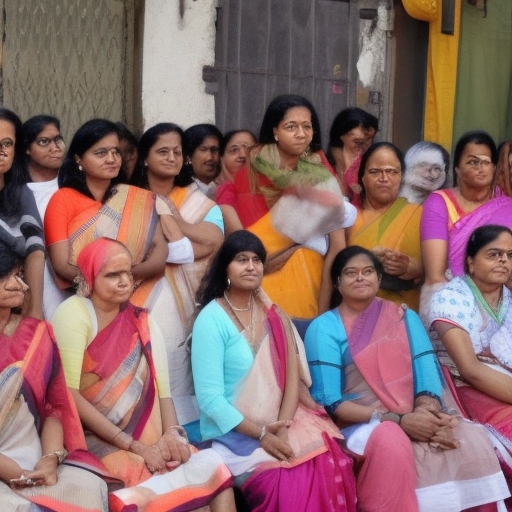Title: Empowering Voices: The Role of Women in Indian Politics
Introduction
India, the world’s largest democracy, has always been at the forefront of socio-political change. However, one area that has seen a gradual but significant evolution is the role of women in Indian politics. This article aims to shed light on this transformative journey, highlighting the strides made by women and the challenges they continue to face in shaping the political landscape of our nation.
The Journey So Far
The journey of women in Indian politics can be traced back to 1952 when Rajkumari Amrit Kaur became the first woman to hold a Cabinet position. Since then, numerous women have broken barriers and made their mark in various domains, from politics to social activism.
In 1984, Indira Gandhi became the first and thus far, the only female Prime Minister of India. Her tenure was marked by significant policy initiatives aimed at uplifting the marginalized sections of society, setting a precedent for women in leadership roles.
The Role of Women Today
Today, women constitute 14% of the total Lok Sabha and Vidhan Sabha seats, as per the data from the Ministry of Women and Child Development. Notable figures like Sushma Swaraj, Smriti Irani, Mamata Banerjee, and Meira Kumar have carved out their unique spaces in Indian politics.
These women leaders have taken up critical roles, influencing policies that impact millions of lives, particularly those of women and children. For instance, Sushma Swaraj’s tenure as External Affairs Minister was marked by her relentless efforts to help Indians stranded abroad, demonstrating the power of empathy and quick decision-making in high office.
Challenges Ahead
Despite significant progress, women in Indian politics continue to grapple with numerous challenges. Representation in political institutions remains disproportionately low compared to their male counterparts. The lack of adequate support systems, negative stereotypes, and safety concerns often discourage women from actively participating in politics.
Moreover, the gender pay gap persists even among elected representatives, with women often earning less than their male counterparts for equivalent roles. This inequality undermines the potential for women to contribute effectively to policy-making processes.
The Way Forward: Empowering Women, Strengthening Democracy
To further empower women in Indian politics and strengthen our democracy, several measures can be taken:
1. Increasing Representation: Implementing policies that encourage more women to participate in politics, such as reserved seats, quotas, and mentorship programs, can help increase representation.
2. Addressing Safety Concerns: Ensuring the safety and security of women politicians is crucial for their effective participation. This includes providing adequate protection, addressing sexual harassment, and fostering a culture that values women’s contributions.
3. Closing the Gender Pay Gap: Enforcing equal pay for equal work can incentivize more women to join politics, ensuring a diverse and representative political landscape.
4. Encouraging Political Education: Empowering women with knowledge about politics and governance can foster their active participation in decision-making processes.
Conclusion
The role of women in Indian politics is not merely about numbers; it’s about empowerment, equality, and diversity. As we strive towards a more inclusive democracy, let us continue to support and encourage women in politics, fostering an environment that values their unique perspectives and contributions. Together, we can create a brighter future for all citizens of India.
👉 [Best Deals on Amazon!](https://amzn.to/abcd) | [Flipkart](https://fkrt.it/xyz123)
